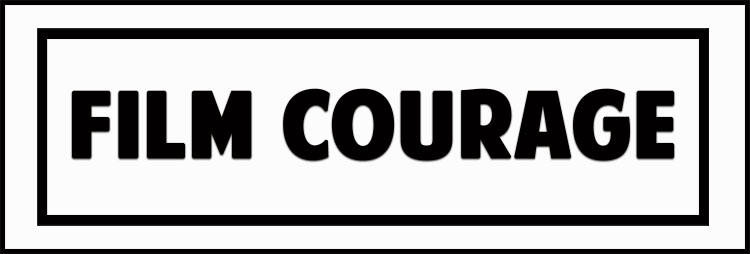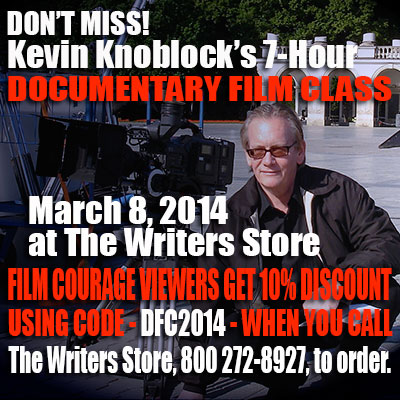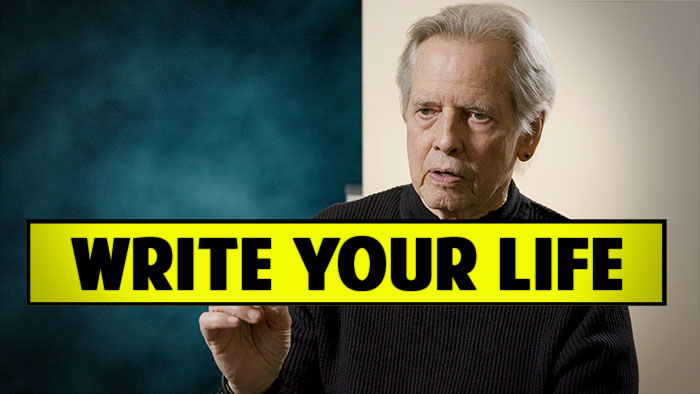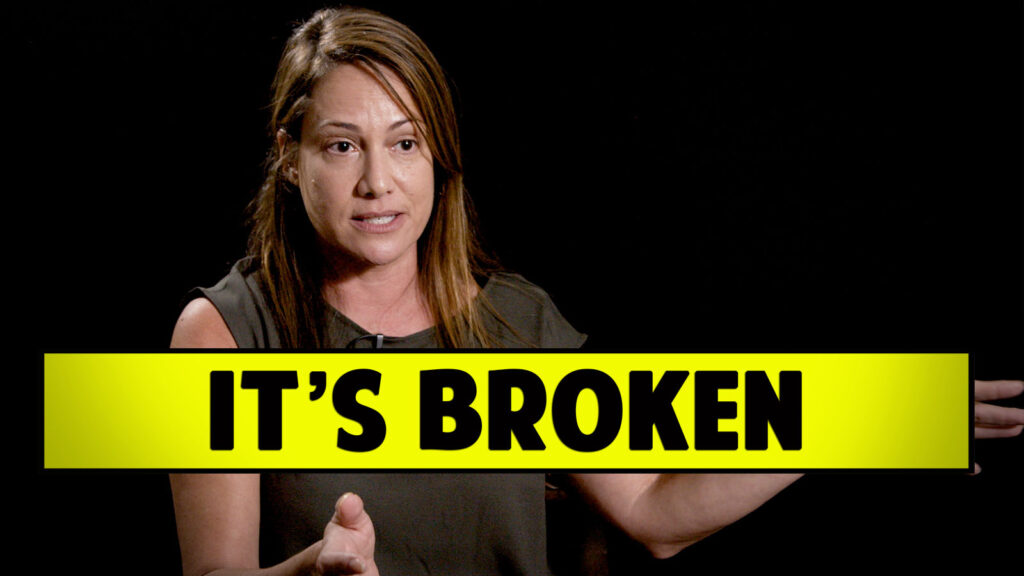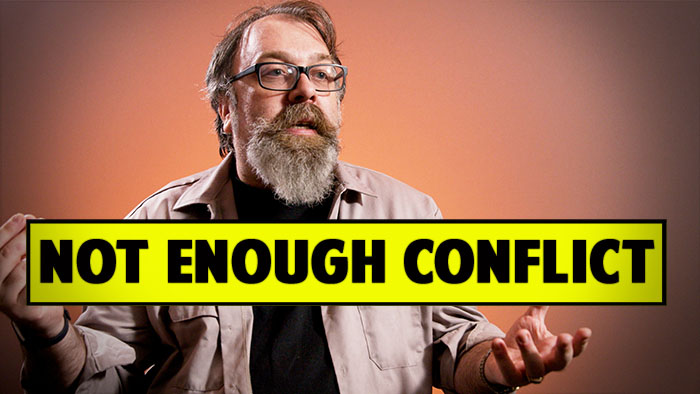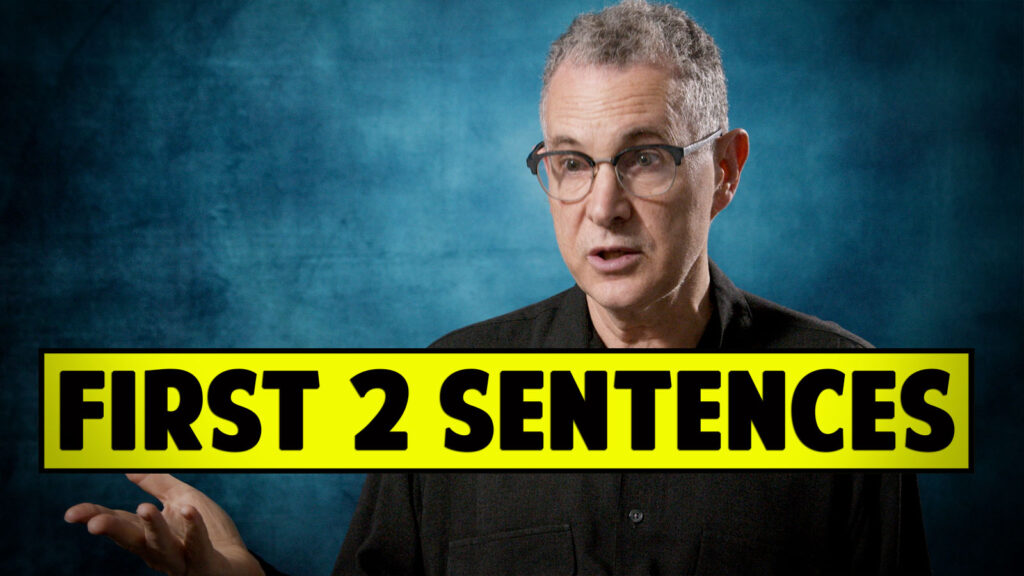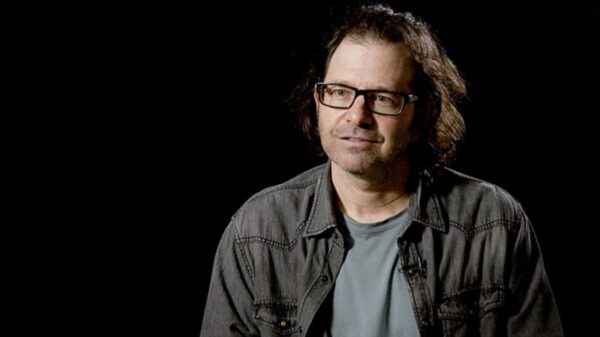(Watch the video interview here)
CONNECT WITH KEVIN KNOBLOCK
Documentaryfilmclass.com
Kevinknoblock.com
Facebook
Twitter
Kevin Knoblock has been a documentary filmmaker for more than 20 years. Among his documentaries are Border War: The Battle Over Illegal Immigration and Broken Promises: The United Nations at 60.
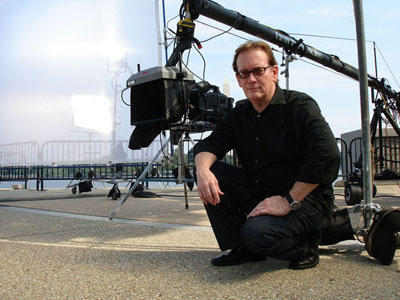
KEVIN KNOBLOCK – FILMMAKER/DGA DIRECTOR/WRITER/PRODUCER
Fade In: July, 2012. I’m on a flight from Washington D.C. back home to Los Angeles. I’m combing though my stack of newspapers and come across a New York Times article about an exciting new documentary film called Searching for Sugarman.
The article was about the buzz surrounding this film, which tells the emotional story of a gifted American musician named Sixto Rodriguez, his two obscure yet brilliant records from the 1970’s, his sad disappearance from the music scene when his career failed to ignite, and his artistic rebirth. I couldn’t wait to see the film.
As a writer, producer and director of documentary films, capturing scenes that might reveal a truth about a person or social issue is one of the most exciting aspects of documentary filmmaking.
I believe the essential element for any documentary film is to tell a compelling story by presenting the facts as they are. I thought this film might have hit the jackpot. After all, truth is stranger than fiction. Right?
When I saw Searching for Sugarman a few weeks later, it became one of my favorite films of the year. It was expertly crafted, incredibly uplifting, and featured a story almost too good to be true.
Searching for Sugarman tells the story of two South Africans who grew up on Rodriguez’ music, which was hugely popular in apartheid South Africa, and their search for the obscure singer, who they believe died of an apparent suicide, on-stage no less. The film posits that Rodriquez never knew of his commercial success overseas. He was a musical genius, tragically ignored.
Spoiler alert: if you haven’t seen Searching for Sugarman, plot is revealed below.
In the film, the two South African fans track down the producer of Rodriguez’ early 70’s albums, and in a goose-bump inducing sequence discover that their musical hero, Rodriquez, is not dead at all, but alive and working hard labor jobs in Detroit. Rodriguez lives!
The film gives the impression that Rodriguez wandered the snowy streets of Detroit after his failed musical career, barely getting by, and unaware of his superstar status in South Africa.
A simple Internet search by these two South African fans would have revealed that Rodriguez had hardly descended into obscurity. In the late 70’s and early 80’s Rodriguez had a significant following in Australia, had hit records, and toured there with Australian hit-makers Midnight Oil. But revealing that fact in Sugarman would have utterly collapsed the dramatic punch of the film.
Peter Bradshaw of The UK Guardian wrote that director “Malik Bendjelloul is guilty of the sin of omission. A rudimentary Internet search shows Rodriguez’s musical career did not vanish the way the film implies, and the film has clearly skated round some facts, and frankly exaggerated the mystery, to make a better and more emotional story.”
I do not know of the Sugarman director’s methodology or make any claims about what he did or didn’t know about Rodriguez’s Australian success as he made his film.
I do know that I fell in love with the movie because of Rodriguez’s music, his charisma, and the supporting real-life characters in the film. And despite the criticism, I find myself watching Sugarman repeatedly.
Why is this, I wonder?
Documentary sleight of hand is as old as the genre itself, and goes back to the beginning of cinema. It doesn’t mean as a writer of documentary films I endorse or consciously use the technique. It just is.
In the 1922 silent documentary Nanook of the North, a film often called the first documentary feature film, filmmaker Robert Flaherty captured the everyday struggles of an Inuit named Nanook and his family in the Canadian Arctic. We see Nanook hunt, build shelter and provide for his family in the harshest of environments.
The facts, however, were not quite as presented, to say the least. ‘Nanook’ was in fact a man named Allakariallak. But ‘Allakariallak of the North’ doesn’t quite have the same ring to it. So let’s give that one to Flaherty.
But Flaherty was also criticized for staging multiple events as filmed ‘reality’. And Nanook’s wives in the film were really not his. (Some say they were Flaherty’s common law wives, but we’ll also leave that one alone.)
Other cast members were paid to play roles in the film. And though Nanook used a rifle to hunt seals and walruses in real life, Flaherty made him use a spear for the film sequences.
Maybe that’s why Nanook is always grinning at the camera. He can’t believe what Flaherty is creating and presenting as ‘truth’.
Flaherty defended his methods. Filmmakers, even non-fiction filmmakers, he maintained, often distort the truth in order to capture its essential nature.
Michael Moore’s Bowling for Columbine was widely criticized for transposing dates and deceptively editing footage. Moore was accused of deliberately misleading viewers to make his points about gun violence in America. In his defense, Moore met the criticism head-on, point by point, and denied any deceptions.
In the documentary Catfish, a young man discovers his online hook-up isn’t who she says she is. Catfish is a compelling and hugely entertaining look at identity and social networking, but some questioned if it was real. Documentary director Morgan Spurlock was quoted as saying “It was the best fake documentary I have ever seen.”
Speaking of Spurlock, his own hit film Super Size Me came under criticism not for its serious topic of fast food and obesity in America, but for Spurlock’s methods. In the film, he eats for 30 days entirely at McDonald’s, a diet that Spurlock claims had severe effects on his physical and mental health.
The film’s detractors claim Spurlock consumed 5000 calories a day and didn’t exercise, and would have gained weight no matter the source of the over-eating.
What’s the lesson here? Bowling for Columbine and Searching for Sugarman both won Oscars for Best Documentary. Super Size Me won the Grand Jury Prize for Spurlock at the 2004 Sundance Film Festival. Catfish spawned an MTV series.
And Nanook of the North was selected as one of the first 25 films marked for preservation by the Library of Congress, for being “culturally, historically, or aesthetically significant.”
Is it an acceptable technique for writers and directors of non-fiction films to, as Flaherty maintained, distort the facts in search of a larger truth?
I’m not saying that any of these filmmakers are guilty of anything, other than making movies that were wildly successful.
Creative works should be judged by the standards of their medium. Fact-based dramas like Lincoln and Zero Dark Thirty are held to a standard, and if they take liberties with the facts they are held accountable.
Non-fiction works should be held to even higher standards. For writers of documentary films, truth trumps everything.
Kevin Knoblock has written, produced and directed hundreds of hours of syndicated television, written and produced multiple hours of one-hour cable documentaries, and written, produced and directed feature length film documentaries, including BORDER WAR (Winner, Best Documentary 2006, American Film Renaissance) and BROKEN PROMISES: THE UNITED NATIONS AT 60 (2005 WorldFest-Houston International Film Festival Special Jury Remi Prize winner).
In 2009 and 2010, Knoblock wrote, produced and directed the feature documentary NINE DAYS THAT CHANGED THE WORLD about Pope John Paul II’s historic trip to Poland, the beginning of the Solidarity movement and the collapse of Soviet Communism. NINE DAYS premiered in April, 2010 in the US and in June, 2010 in Warsaw, Krakow and Rome. NINE DAYS went on to win two 2011 Telly Awards and a Special Jury Gold Remi Award for Best Documentary at the 2011 WorldFest-Houston International Film Festival.
Other titles as writer/producer/director include the feature-length documentaries AMERICA AT RISK, A CITY UPON A HILL, and RONALD REAGAN: RENDEZVOUS WITH DESTINY, winner of the 2011 Hudson Institute Film Festival. RENDEZVOUS WITH DESTINY premiered at The Kennedy Center in February of 2009.
Knoblock also served as Executive Producer of the feature-length documentary PERFECT VALOR (Best Documentary at the 2009 G.I. Film Festival, Best Documentary at the 2010 Beaufort International Film Festival, and Winner of the 2010 Norman Hatch Award, The Marines highest combat journalism award).
Television work includes multiple cable documentaries for A&E, History, TLC, and Discovery and writing and directing at the broadcast stations KCBS and KABC, where he received multiple Emmy nominations.
At Paramount Television, he worked for 9 years as a staff director on “Entertainment Tonight”. Knoblock contributed to over 2800 ET programs and wrote and directed over 1200 segments.
Knoblock attended San Diego State University, where he received a BS in Film and Television. He is a member of the Directors Guild of America.



